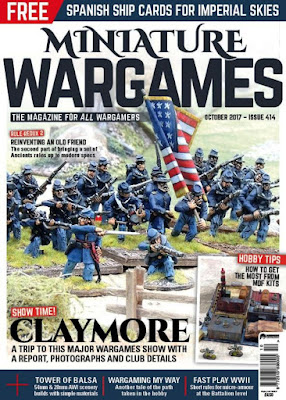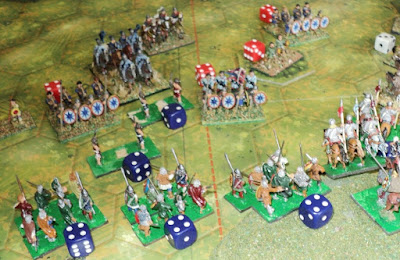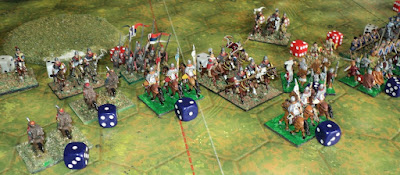When one designs and publishes a set of wargame rules, one is never quite sure how they will be received by people one does not know. Will they be a success ... or was the whole thing just an ego trip on the part of the author? Well in the case of THE PORTABLE WARGAME, it would appear to have been a reasonably successful venture ... and it hasn't done my ego any harm either!
Over recent weeks I have featured two of the battles fought by Archduke Piccolo in which he used my ANCIENT rules, but have not yet mentioned the third, ENCIRCLEMENT OR BREAKOUT.
I really enjoyed reading these three battle reports as the rules seem to have resulted in what I would judge to have been reasonably accurate results.
A few days ago Jeff Butler wrote a blog entry about a naval battle he had recently fought using a developed and modified version of my Pre-Dreadnought Portable Naval Wargame rules (as yet only available as an online PDF download).
Reading Jeff's blog entry reminded me that I need to give some serious thought to properly publishing the various versions of my naval rules sometime soon ... and this has now moved up my list of 'things to do'.
If my ego wasn't inflated enough already, I recently received an email from a wargamer in which he stated that his ten-year-old son had said that 'the rules are so simple you just concentrate on the tactics' and that he had 'been trying to engage him (his son) in my beloved hobby. Your rules may have succeeded!'
That email gave me an immense amount of pleasure. Having spent most of my working life trying to inspire young people, that simple email was both humbling and made me feel that publishing my rules was a very worthwhile thing to do ... and worth all the time and effort I put into writing and publishing them.
Please note that the photographs featured above are © Archduke Piccolo and Jeff Butler.
Over recent weeks I have featured two of the battles fought by Archduke Piccolo in which he used my ANCIENT rules, but have not yet mentioned the third, ENCIRCLEMENT OR BREAKOUT.
I really enjoyed reading these three battle reports as the rules seem to have resulted in what I would judge to have been reasonably accurate results.
A few days ago Jeff Butler wrote a blog entry about a naval battle he had recently fought using a developed and modified version of my Pre-Dreadnought Portable Naval Wargame rules (as yet only available as an online PDF download).
Reading Jeff's blog entry reminded me that I need to give some serious thought to properly publishing the various versions of my naval rules sometime soon ... and this has now moved up my list of 'things to do'.
If my ego wasn't inflated enough already, I recently received an email from a wargamer in which he stated that his ten-year-old son had said that 'the rules are so simple you just concentrate on the tactics' and that he had 'been trying to engage him (his son) in my beloved hobby. Your rules may have succeeded!'
That email gave me an immense amount of pleasure. Having spent most of my working life trying to inspire young people, that simple email was both humbling and made me feel that publishing my rules was a very worthwhile thing to do ... and worth all the time and effort I put into writing and publishing them.
Please note that the photographs featured above are © Archduke Piccolo and Jeff Butler.








































